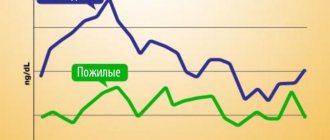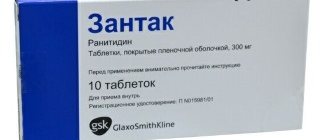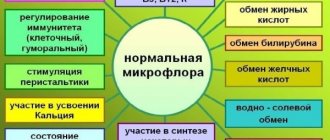Write a review
Reviews: 0
Manufacturers: NIOPIK SSC
Active ingredients
- Not indicated. See instructions
Disease class
- Supraventricular tachycardia
- Ventricular tachycardia
- Atrial fibrillation and flutter
- Premature atrial depolarization
- Premature ventricular depolarization
Clinical and pharmacological group
- Not indicated. See instructions
Pharmacological action
- Antiarrhythmic
Pharmacological group
- Antiarrhythmic drugs
Composition, release form and packaging
The tablets are yellow-colored, round, and two layers are visible on the cross section.
| 1 tab. | |
| diethylaminopropionylethoxycarbonylaminophenothiazine hydrochloride | 50 mg |
Excipients: potato starch – 9.57 mg, sucrose – 19.3 mg, methylcellulose – 0.33 mg, calcium stearate – 0.8 mg.
Shell composition: sucrose – 37.695 mg, povidone – 0.753 mg, quinoline yellow dye (E104) – 0.025 mg, sunset yellow dye (E110) – 0.003 mg, calcium carbonate – 6.308 mg, basic magnesium hydroxycarbonate – 3.678 mg, titanium dioxide ( E171) – 0.665 mg, silicon dioxide – 0.827 mg, carnauba wax – 0.046 mg.
10 pieces. – contour cell packaging (5) – cardboard packs.
general characteristics
Ethacizine is one of the IC class antiarrhythmic drugs that have a long-lasting antiarrhythmic effect.
Principle of action and pharmacokinetics
The active component of this drug is diethylaminopropionylethoxycarbonylaminophenothiazine hydrochloride. Once in the body, it acts in several directions at once:
- slows down the transmission of impulses through the myocardial conduction system;
- inhibits the fast incoming sodium current, affecting the outer and inner surface of the cell membrane of sodium channels;
- blocks slow calcium current;
- increases the threshold of myocardial excitability;
- normalizes heartbeat in acute cardiac ischemia.
Taking the drug does not lead to changes in blood pressure or heart rate. It only inhibits the rate of growth of the front of the action potential, providing anticholinergic and moderate anti-ischemic effects.
The tablets are well absorbed in the intestines. Their active substance is almost completely bound to blood proteins. The amount of its content in plasma is highest three hours after administration, but it can be detected in a blood test after an hour.
The main metabolism of the drug occurs in the liver. Metabolic products are eliminated from the body naturally - along with urine or breast milk.
Composition and release form
Etatsizin is produced in the form:
- Tablets. On top they are covered with a yellowish shell. Each tablet contains 50 mg of active ingredient. Its other components:
- calcium carbonate and stearate;
- sugar;
- methylcellulose;
- colloidal silicon dioxide;
- povidone, etc. Tablets are placed in contour cells of 10 pieces. There are 5 blisters in one package.
starch obtained from potatoes;
Price
The cost of Etatsizin varies: it all depends on the form of its release and the region of sale. You can purchase the drug in the pharmacy chain with a doctor's prescription. The estimated cost of the medicine is presented in the table (Table 1).
Table 1 - Approximate price
| Form | Cost, rub. | Cost, UAH. |
| Pills | 1300-1500 | 440-550 |
pharmachologic effect
Has a long-term antiarrhythmic effect. Inhibits the rate of rise of the front of the action potential (Vmax), does not change the resting potential.
Depending on the dose, it may reduce the duration of the action potential. Does not significantly change the effective refractory periods of the ventricles and atria. It inhibits the fast incoming sodium current and, to a lesser extent, the slow incoming calcium current.
Ethacizine slows down the conduction of excitation through the myocardial conduction system. The ECG shows a prolongation of the PR interval and the QRS complex; the ST interval, reflecting ventricular repolarization, does not change or tends to shorten.
Ethacizine increases the threshold for myocardial fibrillation. Unlike many antiarrhythmic drugs, Etatsizin does not cause a significant decrease in heart rate or prolongation of the QT interval on the ECG.
The antiarrhythmic effect when taken orally usually develops within 1-2 days; the duration of the course of treatment depends on the form of arrhythmia, the effectiveness and tolerability of the drug.
How long can you take it without a break?
The drug Etatsizin can be used long-term. Only the attending physician can determine the daily and single dosages for the course of treatment with this medication. The duration of therapy depends on the general condition of the patient, as well as on electrocardiography or Holter monitoring.
In medical practice, without going to the hospital for a new prescription and monitoring changes in condition, you can take the medicine for up to 6 months.
You cannot prolong or stop taking the pills on your own; to change the treatment regimen, you need to consult a cardiologist and all the necessary laboratory and instrumental research methods that he will prescribe, if necessary.
Pharmacokinetics
Suction
When taken orally, the drug is quickly absorbed from the gastrointestinal tract and is detected in the blood within 30-60 minutes. Cmax in blood plasma is achieved after 2.5-3 hours. Bioavailability – 40%.
Distribution
Plasma protein binding is about 90%. Ethacizin penetrates the placental barrier. Excreted in breast milk.
Metabolism
Intensively metabolized during the “first pass” through the liver. Some of the resulting metabolites have antiarrhythmic activity.
Removal
The active substance is excreted from the body in the urine in the form of metabolites. T1/2 is 2.5 hours.
Pharmacokinetics in special clinical situations
The pharmacokinetic parameters of Etatsizin are subject to significant individual fluctuations and require individual study in individual patients to determine the optimal concentration of the drug in the blood plasma.
Choose your city
Find in 179 more cities of Russia
The purpose (mission) of the site is to provide users with the most complete and up-to-date list of available analogues of drugs with prices in pharmacies and ratings for analogues (synonyms), which were set by the users themselves. Thus, the site analogist.ru can help you not only select cheaper analogues of drugs, but also show you the highest quality drugs according to site users.
The information published on the site is for informational purposes only and does not replace qualified medical care. Be sure to consult your doctor!
Indications for use
supraventricular and ventricular extrasystole; paroxysms of atrial fibrillation and flutter; ventricular and supraventricular tachycardia (including with WPW syndrome).
Indications for use are limited to the presence of severe organic heart damage.
Dosage
The drug should be taken orally, regardless of food intake, 50 mg 2-3 times a day.
If the clinical effect is insufficient, the dose is increased (under mandatory ECG monitoring) to 50 mg 4 times / day (200 mg) or 100 mg 3 times / day (300 mg).
Once a stable antiarrhythmic effect is achieved, maintenance therapy is carried out in individually selected minimum effective doses.
Side effect
From the cardiovascular system: sinus node arrest, AV block, intraventricular conduction disturbance, decreased myocardial contractility, decreased coronary blood flow, arrhythmia, ECG changes (extension of the PQ interval, expansion of the P wave and QRS complex). Arrhythmogenic effect, the likelihood of which is greatest after a myocardial infarction and in other types of cardiac pathology, leading to a decrease in contractility of the heart muscle and the development of heart failure.
From the side of the central nervous system: dizziness, headache, staggering when walking or turning the head, slight drowsiness; in some cases, diplopia and accommodation paresis were noted.
From the digestive system: nausea.
It is possible that side effects will decrease or disappear after using the drug for 3-4 days. With long-term treatment with Etatsizin, these side effects do not increase, and with discontinuation of the drug they quickly disappear.
Side effects depend on the dose and to avoid them, the maximum dose of the drug should not be prescribed.
Contraindications
severe conduction disturbances (including sinoatrial block, AV block II and III degree in the absence of an artificial pacemaker), intraventricular conduction disturbances; cardiac arrhythmias in combination with conduction blocks along the His system - Purkinje fibers; severe hypertrophy of the left ventricular myocardium ;presence of post-infarction cardiosclerosis;cardiogenic shock;severe arterial hypotension;chronic heart failure class II and III according to the NYHA classification;severe liver and/or renal dysfunction;simultaneous use of MAO inhibitors;simultaneous use with class IC antiarrhythmic drugs (propafenone, allapinine) and class IA (quinidine, procainamide, disopyramide, ajmaline); age up to 18 years (efficacy and safety have not been established); pregnancy; lactation (breastfeeding); hypersensitivity to the components of the drug.
with extreme caution in cases of CVS, bradycardia, AV block of the first degree, coronary artery disease, severe peripheral circulatory disorders, chronic heart failure class I, closed-angle glaucoma, benign prostatic hyperplasia, cardiomegaly (increases the risk of developing arrhythmogenic effects), renal failure, hepatic insufficiency, electrolyte imbalance (hypokalemia, hyperkalemia, hypomagnesemia).
Use during pregnancy
The use of the drug is contraindicated during pregnancy and lactation (breastfeeding).
Ethacizin penetrates the placental barrier. Excreted in breast milk.
Reviews of Etazicin
Ethacizine has been used in cardiological practice for a long time, so both patients and doctors have a lot of experience with it. If you study the reviews about Etatsizin, you can see that most of them are positive, but there are also patients who say that these tablets did not suit them.
Whether the drug is suitable for you or not depends only on the individual sensitivity of the body. A complication or undesirable side reaction can occur even if the drug is chosen correctly, its dosage and frequency of administration.
Reviews from doctors
- Natalya Aleksandrovna, cardiologist with 12 years of practical experience. I use this drug very often in my work. Over the past year, the number of patients with atrial fibrillation has increased significantly. Etatsizin is well suited for long-term systematic use and gives positive results.
- Egor Vladimirovich, cardiologist, associate professor. Medical practice experience 19 years. Ethacizine is a proven drug that we very often use in our department and for the treatment of outpatients. Like any other antiarrhythmic, it has certain side effects, but they are not so common. For complex therapy, this drug can be prescribed for up to six months. It is not addictive.
Patient reviews
- Oksana, 63 years old. I have been suffering from arrhythmia for several years now. And this heart pathology was not accidental, because I feel the disruption of the rhythm very well, because my health is very disturbed. My cardiologist prescribed Etatsizin, which I have been taking with good effect for six months now.
- Evgeniy, 52 years old. I have been registered with a cardiologist for a long time with atrial fibrillation. I have already tried many medications and have now settled on Etatsizin, because after it the ECG is almost completely normalized and the doctor says that positive dynamics are appearing.
special instructions
Just like other antiarrhythmic drugs, Etatsizin can act arrhythmically. Therefore, when prescribing Etacizin you should:
strictly take into account contraindications to the use of the drug; identify and eliminate hypokalemia in advance; avoid the use of Etatsizin in combination with class IA and class IC antiarrhythmic drugs; course treatment is preferably started in the hospital (especially in the first 3-5 days of taking the drug, taking into account the dynamics of the ECG after the trial and repeated doses of Etatsizin or ECG monitoring data); stop treatment if ectopic ventricular complexes become more frequent, blockades or bradycardia appear; stop treatment if ventricular complexes expand by more than 25%, their amplitude decreases, the duration of the P wave on the ECG is more than 0.12 seconds.
Risk factors for the arrhythmogenic effect of Etatsizin: organic heart damage (especially previous myocardial infarction), decreased left ventricular ejection fraction, maximum doses of the drug. In addition, caution should be exercised in patients with liver disease.
During treatment with Etatsizin, you should not drink alcohol.
During therapy, it is necessary to regularly monitor the patient's condition and the functions of the cardiovascular system (blood pressure, ECG, echocardiography).
Impact on the ability to drive vehicles and machinery
Due to the risk of dizziness, it is not recommended to drive vehicles or operate complex machinery that requires increased attention and concentration.
List of analogues
Etatsizin is an expensive drug, so the question of what analogues it has is especially relevant. Not all patients can afford systematic long-term use of an expensive drug.
The main analogues of Etatsizin are:
- Propafenone;
- Propanorm;
- Rhythmonorm;
- Amiocordin.
You cannot independently replace a drug that was prescribed to you by your attending physician with its analogues, as this can cause irreparable harm to your health.
Overdose
Symptoms: prolongation of the PR interval and expansion of the QRS complex, increased amplitude of the T wave, bradycardia, sinoatrial and AV block, asystole, paroxysms of polymorphic and monomorphic ventricular tachycardia, decreased myocardial contractility, persistent decrease in blood pressure, dizziness, blurred vision, headache, gastrointestinal disorders .
Treatment: carry out symptomatic therapy. Antiarrhythmic drugs of classes IA and IC should not be used to treat ventricular tachycardia. Sodium bicarbonate can eliminate widening of the QRS complex, bradycardia and arterial hypotension.
Side effect
The use of Etatsizin with other antiarrhythmic drugs of class IC (propafenone, allapinine) and class IA (quinidine, procainamide, disopyramide, ajmaline) is contraindicated.
Ethacizine should not be prescribed concomitantly with MAO inhibitors.
The combination of beta-blockers with Etatsizin enhances the antiarrhythmic effect, especially in relation to arrhythmias provoked by physical activity or stress.
Possible consequences
Etatsizin is a fairly effective drug. But while taking it, side effects often occur (Table 1).
Table 1 - Possible negative consequences of taking
| A system whose operation may be disrupted during treatment with Ethacizin | Consequences of therapy |
| Nervous | Unsteadiness of gait. |
| Headache. | |
| Drowsiness. | |
| Dizziness. | |
| Digestive tract | Nausea. |
| Discomfort in the stomach area. | |
| Visual | Inability to see small objects even at close range. |
| Double vision. | |
| Cardiovascular | Slowing of blood circulation in the coronary arteries. |
| Impaired conduction within the ventricles. | |
| Deterioration of the myocardium's ability to contract. | |
| Stopping the heartbeat. | |
| Arrhythmia. | |
| Severe AV block. | |
| Angina pectoris. | |
| Changes in cardiogram parameters. | |
| Skin covering | Allergic reactions. |
The occurrence of some side effects is the body’s reaction to the action of the drug. If this is the case, their severity decreases within a few days, and after discontinuation of the drug they disappear completely. Most often, the appearance of negative consequences during therapy with Etatsizin is associated with its use in the maximum dosage. Treatment should begin with small doses, following all the doctor’s instructions for using the drug.
Precautionary measures
The tolerability and effectiveness of Etatsizin is affected by the use of other drugs. To avoid side effects, the drug is not prescribed together with MAO inhibitors and class I A antiarrhythmic drugs.
To improve the tolerability of Etatsizin, treat and prevent ventricular, paroxysmal tachycardia, and also, if necessary, reduce the dose of the drug, it is sometimes prescribed to be taken simultaneously with beta-blockers.
When combining Etatsizin and Digoxin, the effect of both antiarrhythmic drugs is enhanced and the contractility of the heart improves. But the concentration of the second drug in the blood increases. To prevent the occurrence of side effects, it is necessary to adjust the dosage of Digoxin downward.
The use of Etatsizin can cause blurred vision and dizziness. During the period of taking it, it is better to refrain from driving a car or doing work that requires concentration and clarity of vision. During treatment with Etatsizin, you need to constantly monitor the state of the cardiovascular system. Therefore, it is recommended to undergo therapy in a hospital setting.
Alcohol compatibility
Drinking alcoholic beverages during therapy with Etatsizin can cause complications and negative reactions from the body. Their use during the period of use of antiarrhythmic drugs is prohibited. This applies even to one-time consumption of alcoholic beverages, including low-alcohol ones.
Violation of this prohibition can lead to the following consequences:
- dystrophic changes in the myocardium of acute or chronic course;
- toxic damage to the heart;
- disruption of cardiac muscle conduction;
- asystole (cardiac arrest).
Bedan V.V.: “Tachycardia, extrasystoles require taking antiarrhythmic drugs. Etatsizin is one of the most effective, but also extremely dangerous drugs. I warn my patients against incorrect dosage and especially against combining the drug with alcohol. Neither beer, nor wine, nor any other type of alcohol can be used in conjunction with Etatsizin. This is deadly."
Appointment under medical supervision
Under the supervision of a specialist, you should take "Etatsizin" for sick sinus syndrome, coronary artery disease, chronic heart failure of the first degree, and peripheral circulation disorders.
Other contraindications for taking the medicine are benign neoplasms in the prostate gland, renal and liver failure, cardiomegaly, hypokalemia, hypomagnesemia, etc.
Taking the drug during pregnancy and lactation is also absolutely contraindicated, since Etatsizin passes through the placenta and can be excreted in breast milk. It is also not recommended to prescribe this medicine to children before they reach adulthood.
It is also impossible to exclude intolerance to individual components of Etacizin. If any allergic reactions are detected, you should stop taking it.
Drug interactions
The use of Etatsizin with other antiarrhythmic drugs of class I C (propafenone, allapinine) and class I A (quinidine, procainamide, disopyramide, ajmaline) is contraindicated.
Ethacizine should not be prescribed concomitantly with MAO inhibitors.
The combination of beta-blockers with Etatsizin enhances the antiarrhythmic effect, especially in relation to arrhythmias provoked by physical activity or stress.




